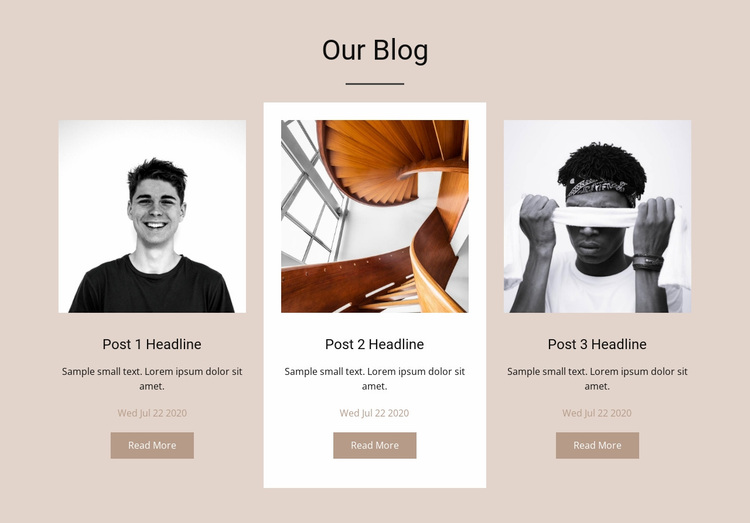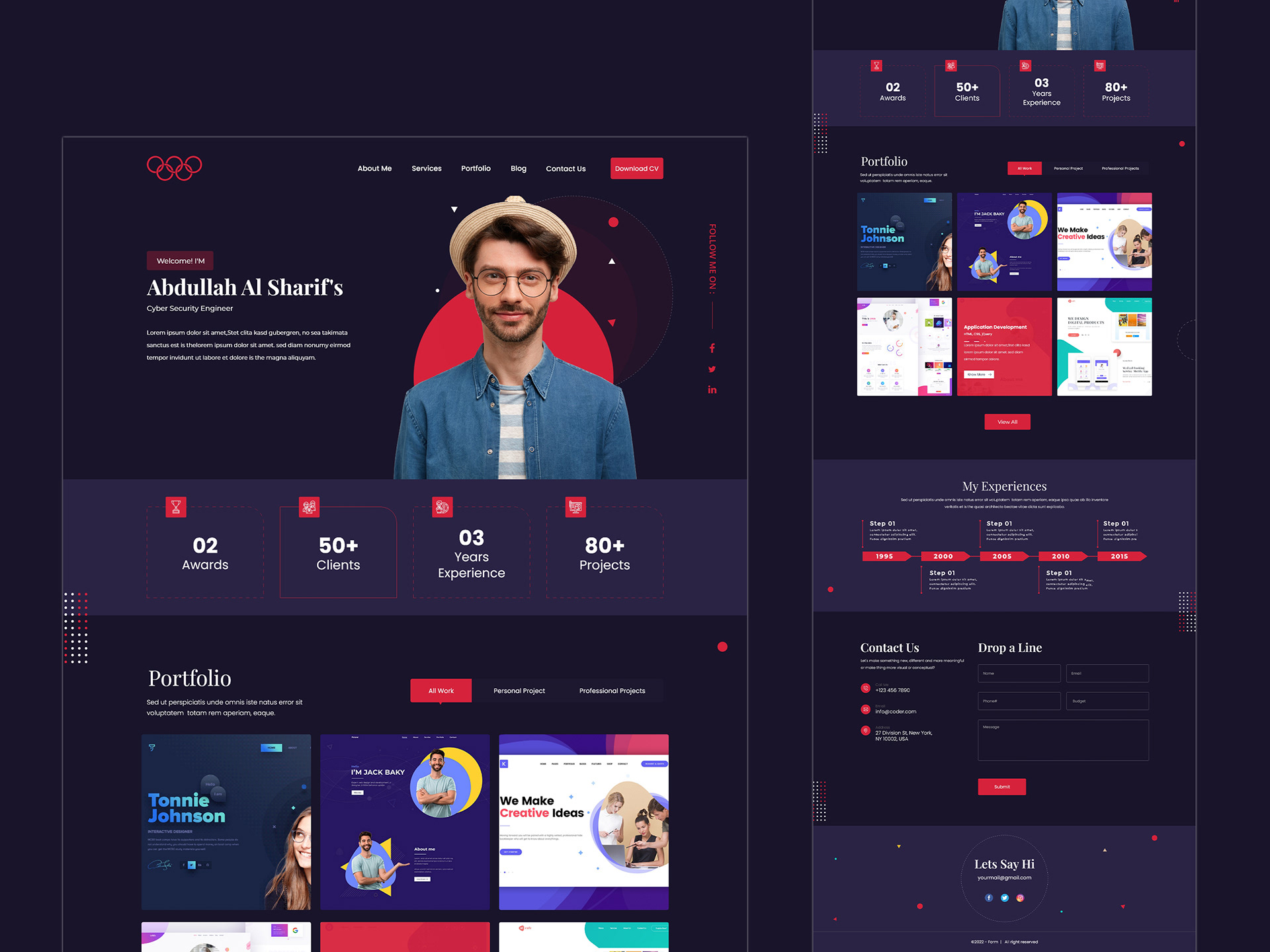Why Website Design is Crucial for Your Business Growth and Success
Wiki Article
The Ultimate Overview to Modern Web Site Design Trends
In the ever-evolving digital landscape, modern web site design patterns play an essential duty fit customer experience and involvement. From the surge of minimal design principles that prioritize simplicity to the influence of vibrant typography in defining brand identification, each component adds to a cohesive online existence. The focus on mobile-first and receptive strategies, along with cutting-edge microinteractions, additionally improves use. The expanding focus on sustainable web design practices reflects a dedication to ecological responsibility. These trends collectively increase crucial questions regarding the future of reliable website design and what it implies for consumers and companies alike.Minimalist Style Concepts
Minimal layout concepts stress the idea that less is more, advocating for simplicity and functionality in aesthetic interaction. This strategy remove unnecessary components, concentrating instead on crucial elements that communicate the desired message properly. By prioritizing clarity, minimalist style enhances user experience, permitting site visitors to browse websites effortlessly.
Core tenets of minimalist style include using adequate white space, which creates a feeling of equilibrium and company. This unfavorable space not only directs the audience's focus to crucial aspects yet additionally fosters a calming aesthetic environment. In addition, a minimal color palette is usually used, making use of soft hues or monochromatic systems to maintain aesthetic cohesion and protect against frustrating the user.
Typography plays a vital duty in minimal style, where legible typefaces are picked for their simpleness and performance in communicating web content. Eventually, minimalist style concepts grow a focused setting that urges customers to involve with the web content, enhancing the general performance of modern-day web site design.
Strong Typography Options
Accepting vibrant typography selections has actually come to be a specifying attribute of modern website design, as it effectively records focus and conveys solid messaging. Developers are progressively using typography not simply as a useful element however as a key visual component that improves the general aesthetic and user experience.
In addition, the association of bold typography with minimal layout principles allows for striking contrasts, boosting readability while keeping visual allure. Making use of whitespace around bold text further highlights its significance, making certain that the message resonates with the audience.
As digital landscapes end up being a lot more affordable, leveraging strong typography allows brand names to distinguish themselves and leave a long-term impact. The mindful choice of typefaces and their application can stimulate feelings, establish tone, and drive action, making bold typography an essential tool in modern-day website layout. Eventually, it is a powerful method to boost storytelling and guarantee that essential messages are not just seen however likewise really felt.
Responsive and Mobile-first Layout
Receptive and mobile-first design has actually become a crucial concept in modern-day site development, showing the raising dependence on smart phones for accessing on-line material. As customer actions changes towards mobile browsing, developers need to focus on a knockout post developing experiences that adjust effortlessly throughout different screen dimensions and resolutions.A receptive style makes certain that a web site instantly adjusts its format, photos, and performance based on the gadget being made use of. Mobile-first design supporters for creating internet sites initially for smaller sized displays, ultimately scaling up to bigger screens.
Carrying out receptive and mobile-first concepts not only deals with individual choices yet likewise lines up with seo (SEO) methods. Major online search engine, like Google, focus on mobile-friendly web sites in their rankings, making it necessary for companies to take on these style strategies. In an affordable electronic landscape, accepting mobile-first and receptive layout is not just a choice; it is vital for ensuring accessibility and interaction with a varied target market.
Engaging Microinteractions
Microinteractions play an essential role in enhancing customer interaction and total internet site experience, specifically in the context of mobile-first and receptive layout. These refined style components give prompt responses to customers, making interactions more intuitive and pleasurable. Instances include switch computer animations, notice notifies, and loading signs, which not just overview individuals but also develop a sense of connection with the user interface.Incorporating appealing microinteractions can dramatically enhance functionality by lowering cognitive lots. When customers obtain auditory or visual feedback upon performing activities, such as clicking a switch or submitting a type, they really feel much more positive in their selections. This promotes a smoother navigating experience, ultimately boosting customer retention.

As site style fads continue to progress, the significance of microinteractions can not be overemphasized. They act as the subtle yet powerful touchpoints that change ordinary communications right into amazing experiences, therefore raising the general efficiency of contemporary internet style.
Lasting Web Layout Practices
Lasting website design techniques are coming to be significantly necessary site here as the electronic landscape expands and environmental issues increase. Developers and programmers are recognizing their responsibility to produce web sites that not just offer customer demands but likewise reduce ecological effect. This strategy includes numerous vital methods.Firstly, maximizing energy consumption is vital. Web sites ought to be designed to fill swiftly and effectively, which reduces server power use and improves user experience. Strategies such as photo compression, minimizing HTTP demands, and making use of modern coding methods add significantly to this goal.
Second of all, selecting environment-friendly hosting suppliers is crucial - website design. Many holding business are currently powered by renewable resource resources, making it possible for websites to operate in a more sustainable fashion. look at this site This choice shows a commitment to decreasing carbon impacts
Moreover, adopting a minimal design can enhance sustainability. Less components on a web page cause less information transfer, which not only quickens loading times however also conserves sources.
Last but not least, promoting electronic access makes sure that internet sites reach a larger audience without unnecessary bloat, aligning customer experience with ecological responsibility. By incorporating these lasting methods, internet developers can contribute positively to both user involvement and the world's wellness.
Final Thought
In summary, contemporary internet site style fads highlight the integration of minimalist principles, bold typography, and responsive design to improve individual experience. Embracing these trends is vital for developing impactful electronic experiences that reverberate with customers in an increasingly competitive on-line landscape.In the ever-evolving digital landscape, contemporary site design trends play a critical role in shaping user experience and involvement. By prioritizing clearness, minimal layout boosts user experience, enabling site visitors to browse sites effortlessly.
Eventually, minimal style principles cultivate a concentrated setting that urges individuals to involve with the content, enhancing the overall effectiveness of modern-day web site design.Microinteractions play a critical function in enhancing individual interaction and total internet site experience, especially in the context of receptive and mobile-first design.In recap, contemporary site design fads stress the integration of minimalist principles, bold typography, and responsive design to improve customer experience.
Report this wiki page